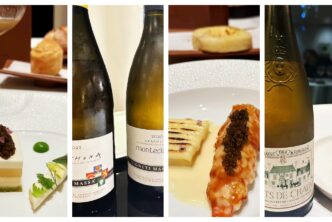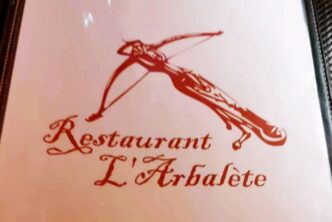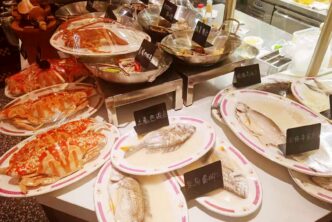CAVEAU D’EGUISHEIM
3B Pl. du Château Saint-Léon
68420 Eguisheim
France
Tel. +33 3 89 41 85 72
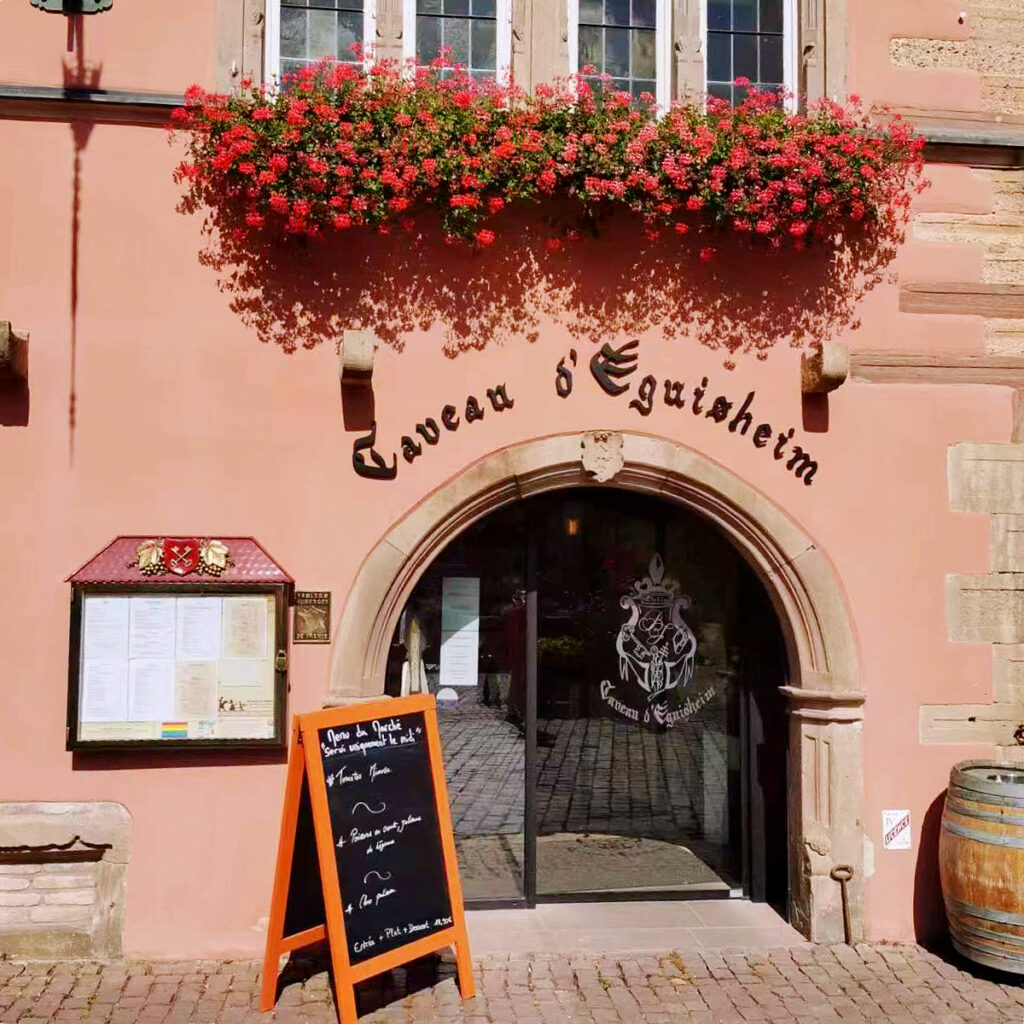
The dishes
Escargots à l’Alsacienne -6 pièces (Alsatian-styled snails, 6 pieces)
Salade gourmande: foie gras, saumon mariné, jambon cru fumé et terrine du chef (gourmet salad with foie gras, marinated salmon, chef’s terrine and smoked raw ham)
Choucroute garnie aux 5 viandes (sauerkraut with five meats)
Gratin de Munster aux lardons et salade verte (Munster cheese au gratin with bacon and green salad)
The wines
Ginglinger 2019 Sylvaner Alsace 91
Albert Hertz 2020 Eguisheim E Alsace 89

Meals cannot get much more traditional than they are at Eguisheim’s Caveau, located right in the heart of town and where the menu boasts every Alsatian dish you can think and know of (for example, presskopf, coq au Riesling, choucroute, sole meunière, baeckeoffe, Munster cheese, ). Factor in that the Caveau d’Eguisheim is classified as an historic monument of Eguisheim (the building dates back to the seventeenth century), a town so pretty that it has been nominated as one of France’s prettiest (and in 2013 as the favourite of the French people), with a very woodsy, homey, stube-like interior and you’ll feel like you dropped not into a restaurant but into the dining room of old Alsatian friends. The cozy, relaxed, happy atmosphere, the many generally older-aged patrons, the rustic charm of the woodwork and good lighting make for a very comfortable setting indeed. In fact the look of the place is a relatively new one, in that the Caveau’s also new owners, Bertrand and Florence Gellie, re-opened it in 2019 after renovating it purposely looking to give it a stronger and warmer dose of brasserie-styled charm, while also enlargening the dining room. (The restaurant had been closed since 2011, after its Michelin starred chef, Jean-Christophe Perrin, left to create the restaurant L’Altévic in Hattstatt.)The staff is made up of the individuals who were already with the Gellie family at their previous Caveau Heuhaus (which they sold to take over what is areal Eguisheim institution), plus Gellie family members.
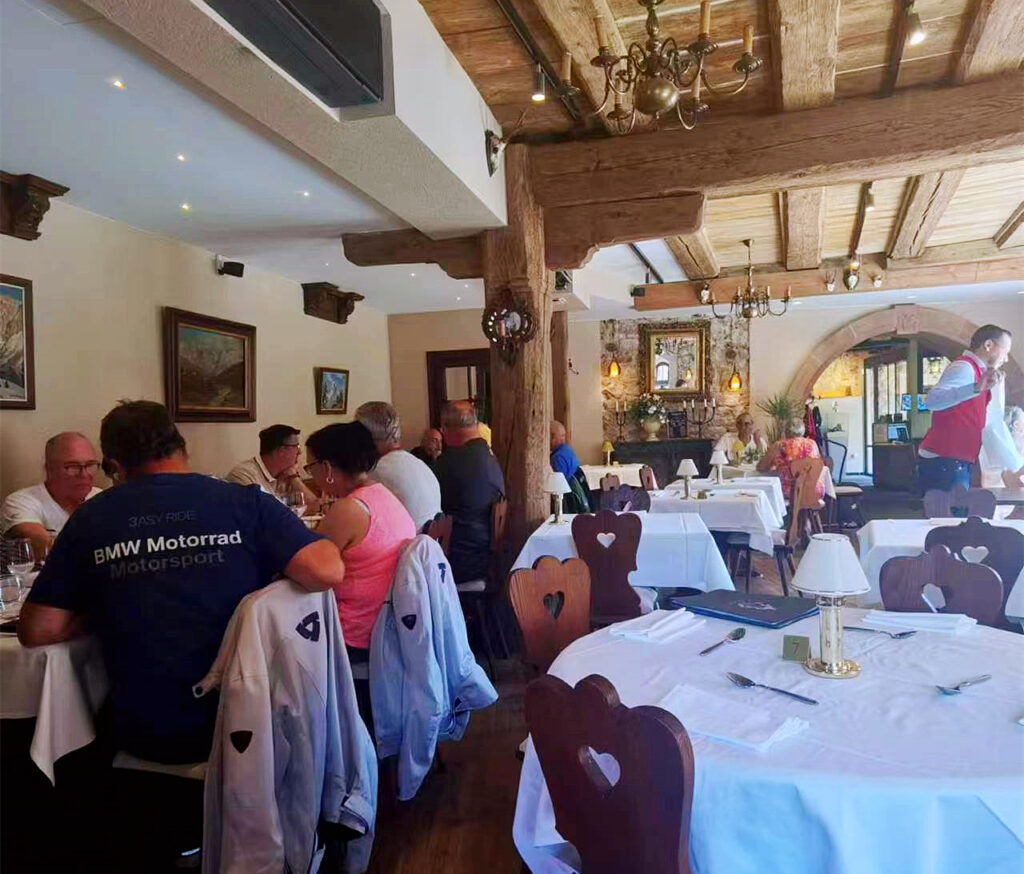
The menu, as mentioned, is full of traditional choices, but the one traditional diosh you will not find at lunchtime, despite what you’ll read on practically every website, is Alsace’s tarte flambée (think of it as, admittedly rather incorrectly, as a local version of pizza). So don’t come here to try one, for you’ll be told they don’t serve them, as was the case with our polite, but rather matter-of-fact waiter.
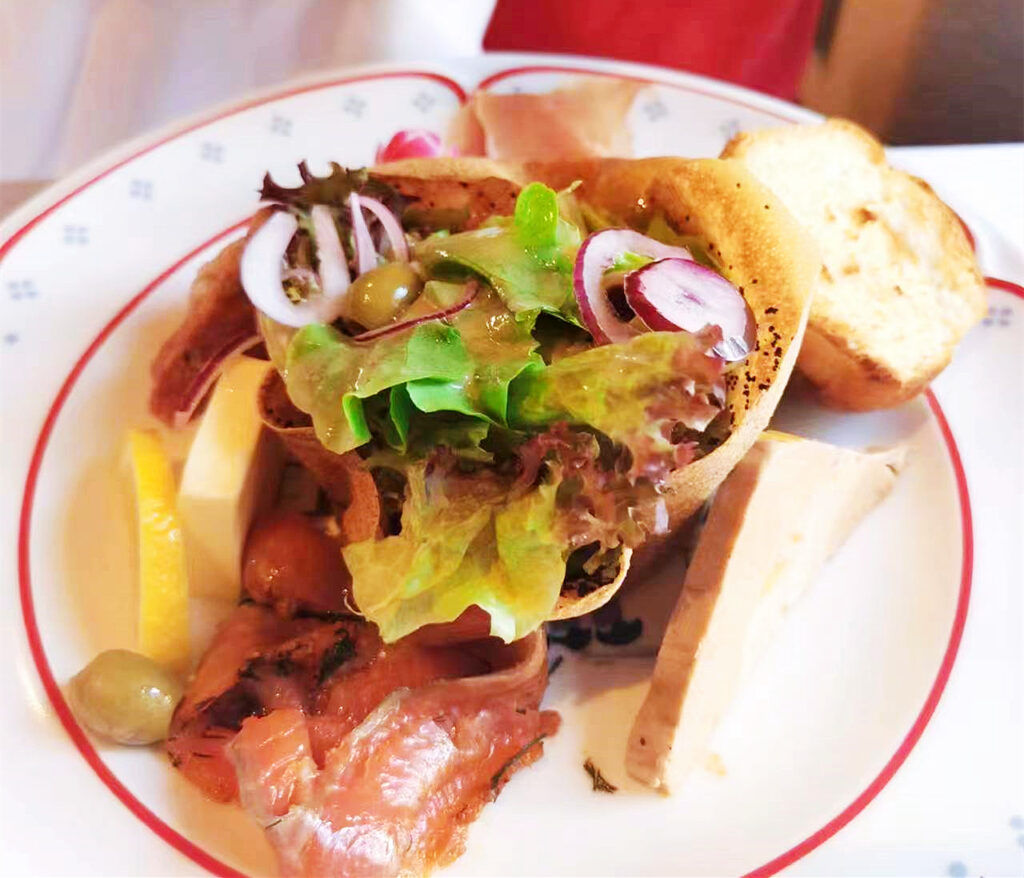
As far as the food goes, no complaints. It’s solidly prepared, copious in its portions and hearty: nobody will walk awa hungry from the Caveau d’Eguisheim. If nothing sticks out for halkcyionic goodness, nothing will have you pulling your hair out in despair either. The escargots are delicious (I would have liked a bit more garlic, but that’s just my personal taste: so don’t listen to me, they were fine and you can choose to eat twelve instead of six, like I did) and the gourmet salad actually a real winner, probably the best dish of the day. Large and crammed with goodies as the list recited, it comes with an especially good salmon and slab of foie gras. In fact, I point out that the translation from French into English of the word “gourmande” comes out to “gourmet” or “epicure” but that’s not exact. More precisely, a gourmand is someone who likes to eat and drink, actually taking particular joy in doing so (that’s the quality that really makes the person in question a “gourmand”), but is usually less discerning of the quality of the ingredients and less knowledgeable about their provenance and preparation, unlike a true gourmet, who is more erudite about such matters. In this case, the word gourmande applies perfectly, because with its wealth of tasty ingredients such as the marinated salmon and the foie gras, it really couldn’t have been more desirable to eat, inspiring gluttonous thoughts from the get-go. Last but not least, the choucroute was also about as good as you’ll have anywhere else in town (or elsewhere, for that matter).
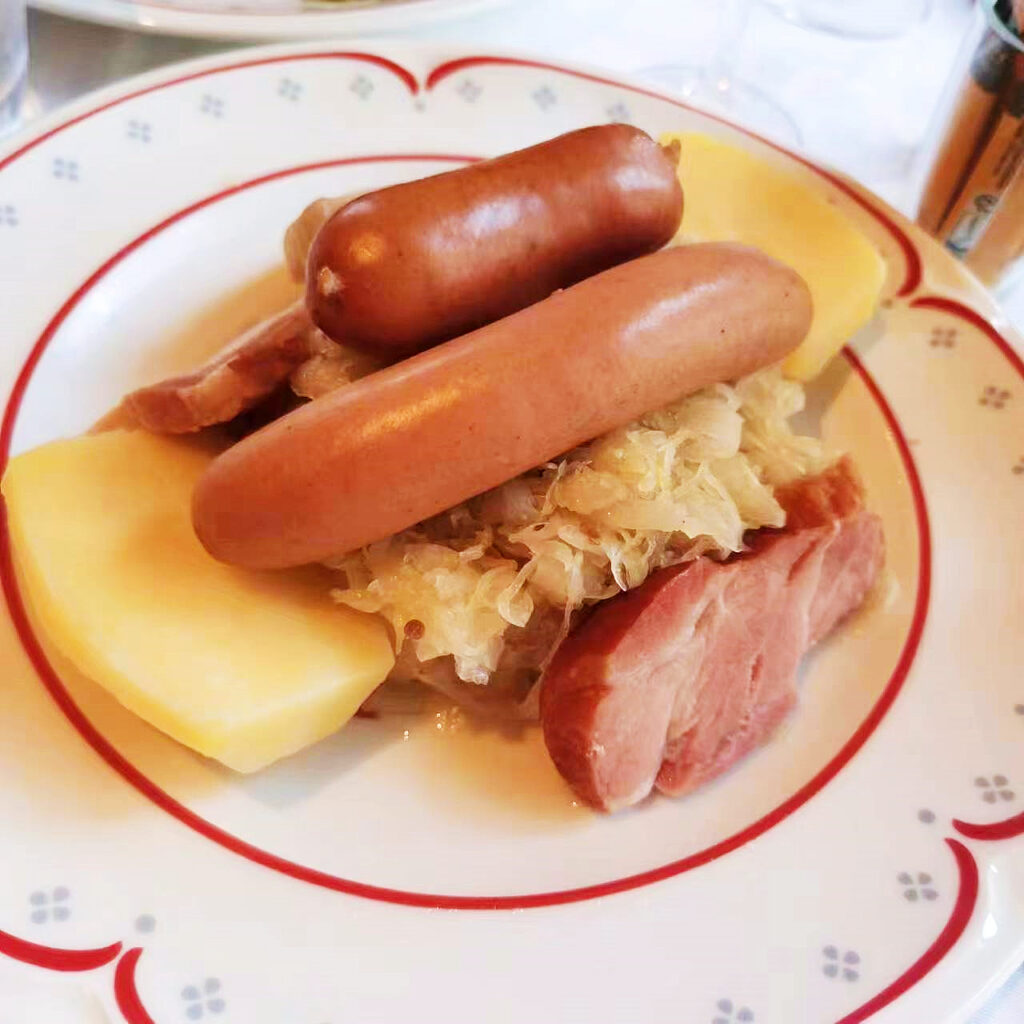
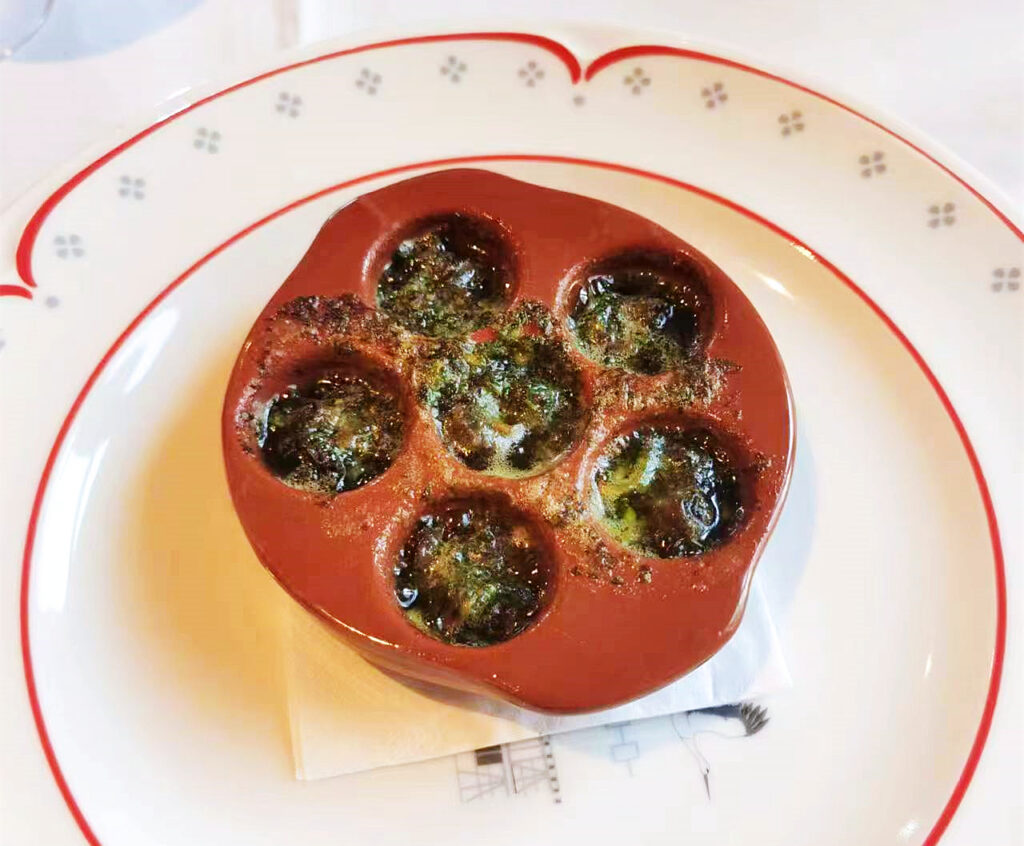
The wine list is compact, devoted to the vignerons of the town, but frankly I was left a little unimpressed. While you will read on many websites and guides that it’s a wine list that boasts many different wines and producers, I found it to be less deep than I expected or hoped for, offering the wines of mostly the same few Eguisheim estates over, with many of the town’s better wineries (and especially their top wines) missing altogether. For a simple lunch, it’s not a bad list, for you will certainly find many wines that will pair just fine with your meal. Again, it’s not a bad wine list: but I think it’s a shame it does not go further, especially given that Eguisheim is one of the Haut-Rhin’s villages most blessed with many wineries (both well-known and not) indeed. And besides, this is precisely the Caveau’s original raison d’être, given it was created in the 1960s upon the push of then Mayor Léon Beyer who wished for it to showcase the town’s wines. No matter, we selected two wines by the glass that were just fine: the Ginglinger 2019 Sylvaner Alsace and the Albert Hertz 2020 Eguisheim E Alsace. The former is an example of just how delicious and how misunderstood the Sylvaner grape is: fresh, precise and juicy, but with sneaky concentration and texture, this is a really lovely aperitif wine that can stand up to bigger fare too. The latter is a blend and though approachable and uncomplicated, it was a little too simple in its easy drinking charm.
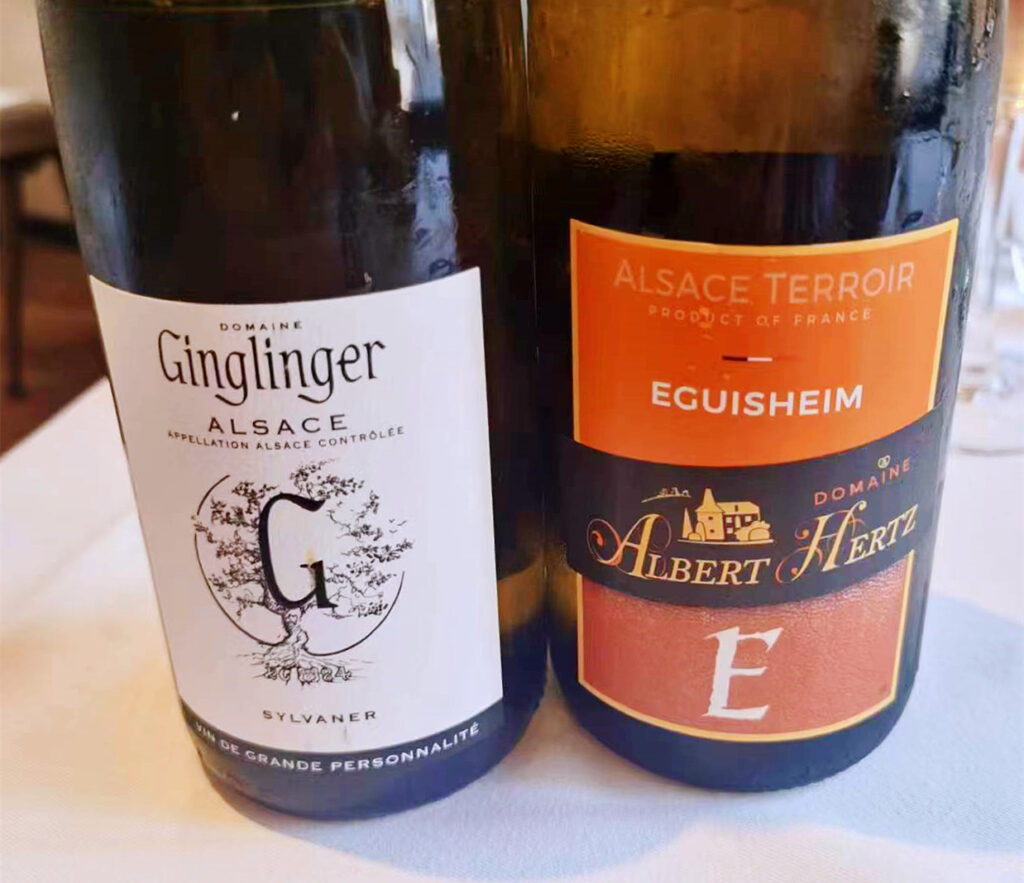
Overall, we had a simple but good lunch at the Caveau d’Eguisheim: simply put, this is an address that doesn’t disappoint. We look forward to coming back next time we’ll be in Alsace, which given how beautiful the region is, will hopefully be sooner rather than later.
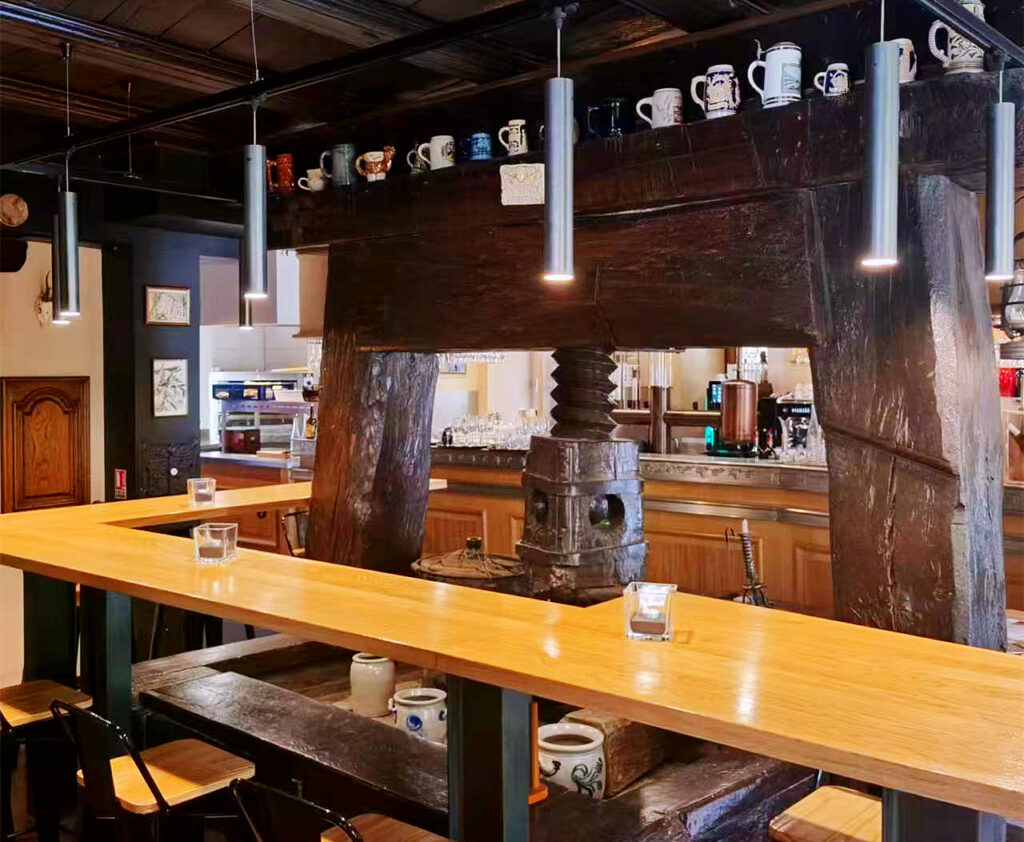

 中文
中文
